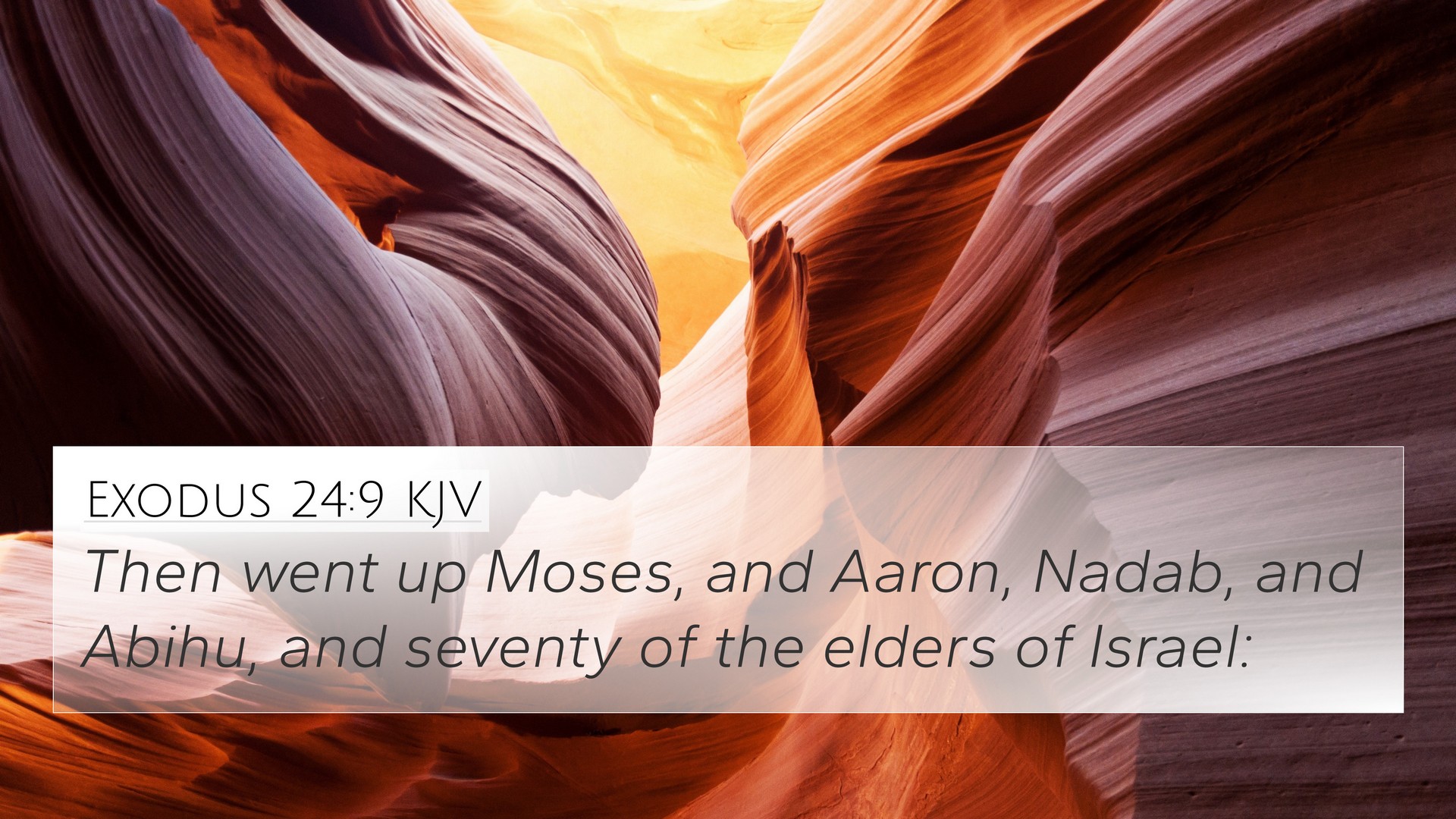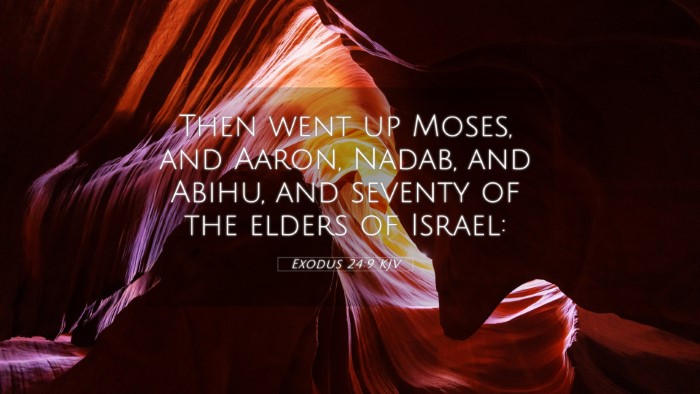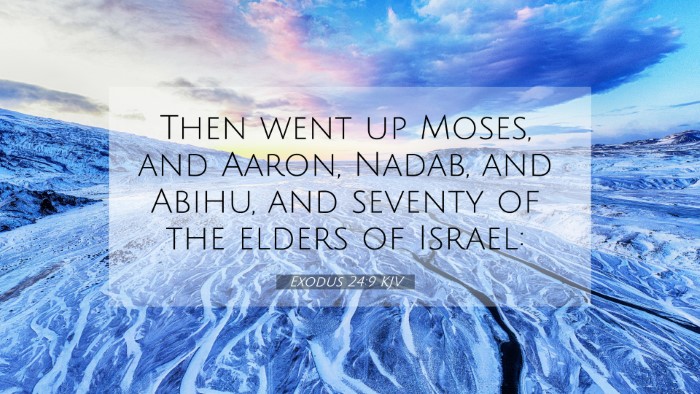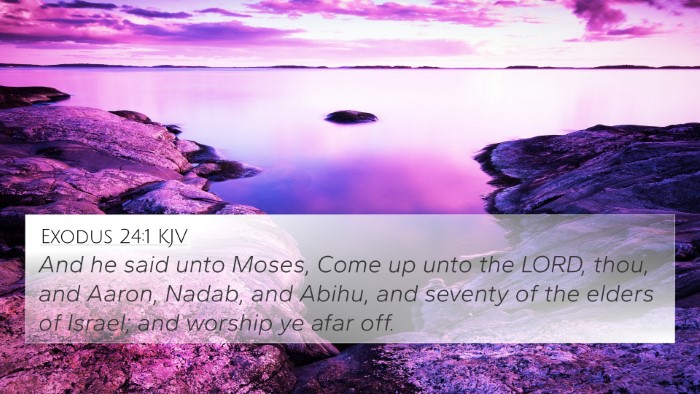Understanding Exodus 24:9
Exodus 24:9 states, "Then went up Moses, and Aaron, Nadab, and Abihu, and seventy of the elders of Israel." This verse marks a significant moment in the narrative of the Israelites as they establish their covenant with God. The following analysis combines insights from various public domain commentaries to provide a comprehensive understanding of this verse's meaning.
Summary of Exodus 24:9
This passage describes a pivotal moment where key figures in Israel's leadership ascend Mount Sinai to meet with God. The assembly includes Moses, his brother Aaron, Aaron's sons Nadab and Abihu, along with seventy elders, symbolizing the formal acknowledgment of God’s covenant. This event emphasizes the importance of collective leadership and the sacred nature of their relationship with the Divine.
Commentary Insights
Matthew Henry emphasizes the significance of the unity among the leaders as they ascend the mountain together. He notes that the presence of elders alongside Moses indicates the communal aspect of the covenant relationship. This gathering not only represents the people's collective obedience but also mirrors the authority structure established by God.
Albert Barnes points out that the ascent of these leaders conveys the idea of divine revelation. Barnes interprets this moment as a preparation for receiving the law and guidelines from God, which would further solidify the covenant. The inclusion of Nadab and Abihu also foreshadows their future roles and the serious responsibility that comes with leading God's people.
Adam Clarke expands on the implications of the elders’ presence, suggesting that their participation signifies a direct involvement in the covenant. He mentions that their ascent to the mountain implies a level of holiness expected from leaders and a collective submission to God's authority. Clarke also highlights parallels with future biblical events where leaders encounter God directly.
Cross-References for Exodus 24:9
This verse connects with several other passages in the Bible, illustrating thematic and narrative parallels:
- Exodus 19:20 - God calls Moses to the mountain.
- Exodus 20:1-21 - The giving of the Ten Commandments to Moses.
- Numbers 11:16-17 - God instructs Moses to gather seventy elders.
- Matthew 17:1-2 - The transfiguration of Jesus, involving a group of leaders witnessing divine revelation.
- Hebrews 9:19-20 - Reference to the blood covenant Moses enacted.
- 1 Peter 2:9 - God's chosen people, emphasizing covenant identity.
- Acts 1:24-26 - Seeking God's guidance in establishing leadership among believers.
Interpretative Themes in Exodus 24:9
The themes presented in this verse and its surrounding context highlight essential elements of leadership, covenant, and communal worship:
- Covenantal Leadership: The gathering of leaders reflects the importance of collective responsibility in guiding the people towards God's will.
- Divine Revelation: Ascending the mountain symbolizes preparation for receiving God's law, illustrating the relationship between obedience and revelation.
- Collective Spiritual Experience: The unity of the leaders serves as an example of collaborative faith, emphasizing the role of community in spiritual journeys.
Conclusion
Exodus 24:9 is a critical verse that encapsulates key aspects of leadership and the spiritual authority of the Israelite elders. The insights drawn from various commentaries underscore the rich complexity of biblical text and its connections with other scriptures. Understanding these connections can enhance one's study and appreciation of the Bible, encouraging deeper exploration of inter-Biblical dialogue and thematic relations among verses.
For those wishing to explore these themes further, numerous tools for bible cross-referencing, including concordances and cross-reference guide resources, can aid in finding links between related scriptures. This practice enriches bible study and offers clarity on scripture interpretation, making it easier to identify connections and similarities among various bible verses.



